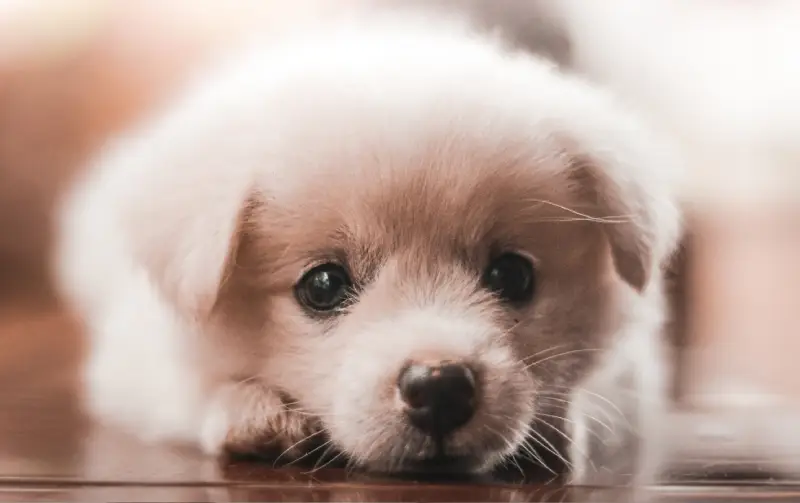
How Do I Potty Train My Puppy?
Potty training your puppy is one of the most important steps in raising a happy, well-adjusted pet. While it may seem challenging at first, with patience, consistency, and positive reinforcement, you can successfully teach your puppy where and when to go. Let’s break the process down into manageable steps to help you get started.
Start Early
The earlier you begin potty training, the easier it will be for your puppy to develop good habits. Puppies are most receptive to learning between 8 and 16 weeks of age. At this age, they are like sponges, ready to absorb lessons and build a strong foundation for good behaviour. Be prepared to dedicate time and effort during this critical window for their development.
Establish a Routine
Dogs thrive on routine, as it helps them feel secure and understand what’s expected of them. Create a consistent schedule for feeding, playtime, and bathroom breaks. Take your puppy outside first thing in the morning, after meals, after naps, and before bedtime. Puppies have small bladders, so they may need to go as often as every two hours during the early stages. A predictable schedule reduces the likelihood of accidents and reinforces good behaviour.
Designate a Potty Spot
Choose a specific outdoor spot where you want your puppy to do their business. The scent of previous trips to this spot will encourage them to use it again. Always take your puppy to the same area and use a cue word or phrase like “go potty” to create a clear association. Repeating this routine will help your puppy understand the purpose of being in that location.
Reward Good Behaviour
Positive reinforcement is key to successful potty training. Praise your puppy enthusiastically and offer a small treat immediately after they go in the correct spot. Timing is essential—reward them right after they finish, not after you’ve gone back inside. This immediate reinforcement helps them connect the act with the reward. Over time, the praise and routine will become a sufficient motivator.
Supervise and Confine
When indoors, keep a close eye on your puppy to prevent accidents. You can use baby gates or a crate to restrict their access to areas where accidents might happen. Crate training can be particularly useful, as most dogs will avoid soiling their sleeping space. Ensure the crate is appropriately sized—just big enough for your puppy to stand, turn around, and lie down comfortably.
Watch for Signs
Learn to recognise the signs that your puppy needs to go. These might include sniffing the floor, circling, or whining. Puppies often display these behaviours right before having an accident, so act quickly by taking them outside. The more you respond to their cues, the quicker they’ll learn to associate going outdoors with bathroom breaks.
Handle Accidents Calmly
Accidents are a normal part of the learning process, so don’t panic when they happen. If you catch your puppy in the act, interrupt them gently with a clap or a firm “no” and immediately take them outside. Never punish your puppy after the fact—it won’t help and can create fear or confusion. Clean up accidents thoroughly with an enzymatic cleaner to remove odours that might attract them to the same spot.
Be Patient and Consistent
Consistency is the foundation of potty training. Stick to your schedule, use the same commands, and always take your puppy to the designated potty spot. Every puppy learns at their own pace, so stay patient even when progress seems slow. Celebrate small wins, such as fewer accidents or your puppy starting to signal when they need to go outside.
Use Crate Training Effectively
If you decide to use a crate, ensure your puppy associates it with comfort and safety. Never use it as a form of punishment. Encourage your puppy to spend short periods in the crate during the day with a toy or chew to keep them occupied. This helps them view the crate as a positive space rather than confinement.
Transition Gradually
As your puppy becomes more reliable, you can gradually extend the time between bathroom breaks. If they consistently stay accident-free indoors, begin giving them access to more areas of the house. This should be done slowly to ensure they don’t become overwhelmed or forget the rules.
Consider the Weather
Potty training in challenging weather, such as heavy rain or snow, can be tricky. Prepare your puppy for all conditions by introducing them to outdoor bathroom breaks in different types of weather early on. You might consider using a covered area or providing a raincoat for your puppy to make the experience more comfortable.
Build a Strong Bond
Potty training is more than just teaching your puppy where to go—it’s about building trust and a strong relationship. Approach training with kindness and understanding, knowing that your efforts will set the stage for a lifetime of positive interactions.
Potty training is a journey, not a race. By staying consistent, patient, and encouraging, you’ll guide your puppy toward becoming a well-trained, confident companion. Remember, accidents are temporary, but the bond you’re building will last a lifetime. Happy training!
For more tips on dog ownership and care, explore the Dog Blog at Dog Deals for valuable resources.
